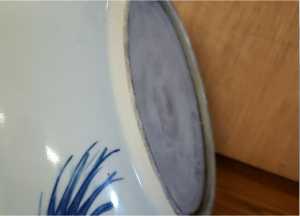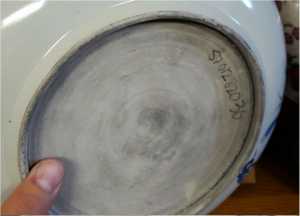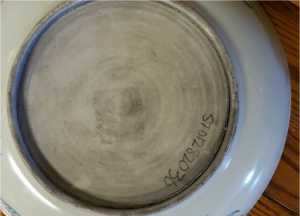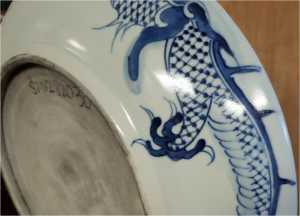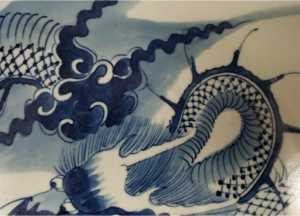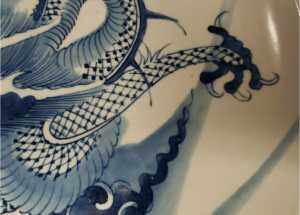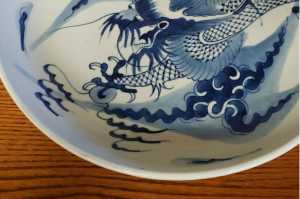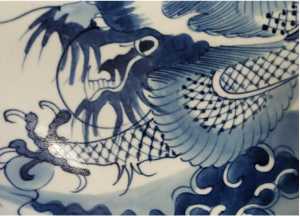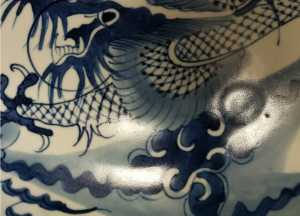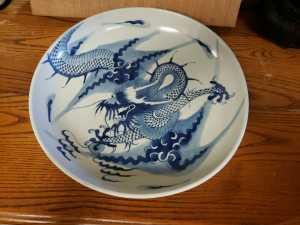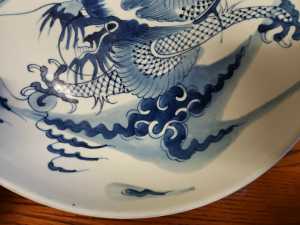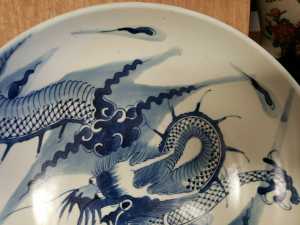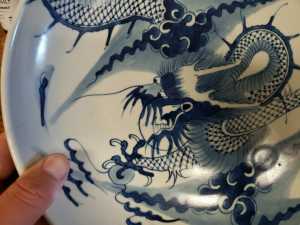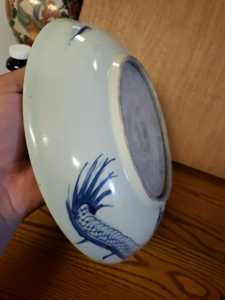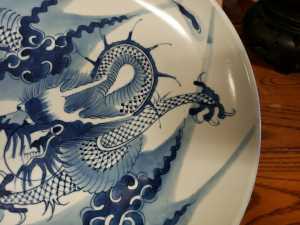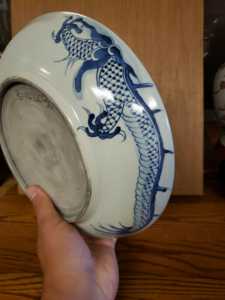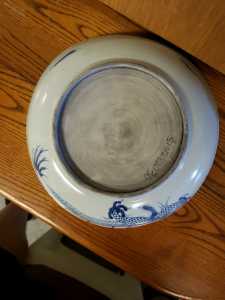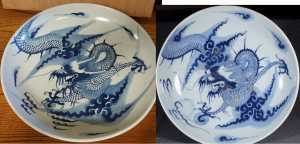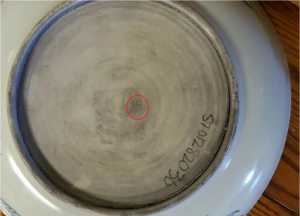The Chinese and Asian Art Forum. For Fans, Collectors and Dealers.
 Basic Rules For the BidAmount Asian Art Forum: Talk about whatever you want. You can even discuss and offer things that are for sale if they are authentic. Maximum image file size per post is 2 MB. Images of 700pxl x 700pxl are optimal if saved at a medium resolution. Be respectful of others and enjoy yourself. Click the YouTube link for a brief tutorial on using the forum. You can also EMBED Videos by cutting and pasting from You-Tube, Vimeo etc.
Basic Rules For the BidAmount Asian Art Forum: Talk about whatever you want. You can even discuss and offer things that are for sale if they are authentic. Maximum image file size per post is 2 MB. Images of 700pxl x 700pxl are optimal if saved at a medium resolution. Be respectful of others and enjoy yourself. Click the YouTube link for a brief tutorial on using the forum. You can also EMBED Videos by cutting and pasting from You-Tube, Vimeo etc.
NOTE: To post an item or add a new post, click open the category title from the FORUM LIST, and CLICK the Blue ADD TOPIC button.
Hi All,
Would be ideal to hear opinions on a possible date as for this porcelain.
For some reason I have that small idea in my head - that's possible for the Vietnamese market (the blue color is dull a little bit in my eyes) But I am guessing, the seller did pictures in front of artificial light, I am guessing that colors are off, what's in reality. Not sure tought.
I would go with 18/19th, maybe modern?
It's around 28/29cm in diameter.
I did purchase it, so I guess there is no way back, no matter what. The price paid - I just couldn't to leave this, just sitting there for that price 🙂
@Audrius
I will beinterested to hear what others think, but my initial feeling is that the scales are poorly done. I have seen a couple of other dishes of this type and they were far more in keeping with what I would expect a 19th c dragon skin to look like.
I am very happy as always to learn something new, but I do find the base a bit odd - is that a genuine collection-type number, or there to deceive?
Julia, I completely agree with you in regards to the pattern as for the 19th century, looks odd. Not sure about a number on a base.
I think this bowl/charger can stretch back to earlier than the 19th century and probably we should consider this as in an area of the 18th century or modern.
And if this by any chance 18th century made, very finely painted pattern as for this type of ware in my personal opinion.
Seller didn't have any other Chinese bits as for sale, just random stock of everything, I think this reduces the possibility that this porcelain was pushed/sold as antique while modern in real - but it doesn't mean that's really antique (if you know what I mean).
P.S. if i am not mistaken, possibly - on a foot rim (next to a number on a base), looks like a trace of worn number as well. But maybe it just me.
@Audrius
I just did a search on 18th c dragon dish and loads came up- even some in the same style described as japanese and an English . It is obviously a well known pattern.
So whereas my experience of Chinese dragons in 18th c are not like these, maybe that style of dragon is ok for that period, however, I still feel yours is modern.
The style of dragon is Japanese like, but rendered mostly in the Guangxu style of the late 19th c.
This kind of bowl, if genuine, would come from a regular kiln (people's kiln), so one would expect the surface of the slip shows irregularities, an rust colored foot ring, some piling from the cobalt that resulted in slip retractions or burst. None of these traits can be found on the your bowl (at least not in these photos).
So, as others have already said, your bowl is a copy...probably late 20th c.
The perfect looking surface makes me too think it's modern. For me the strange dirtied bottom and the pseudo museum inventory number unfortunately cross the border from copy to fake. That doesn't mean your actual seller is dishonest but the first seller of this plate was.
Birgit
In the last 5 years, this kind of charger with this pattern are copied very very often. I have watched a couple of hiding camera videos from Jingdezhen and saw similar chargers several times.
This kind of dishes with unglazed bottom are mostly made during the Yongzheng period. The pattern is called "dragon across the wall", because the dragon is painted from the outside across the rim into the inside of the dish. Very classical pattern.
About yours I'm not convinced. From the first glance it looks really well done. But if you look into the details, you see something strange.
Birgit has already pointed out. The surface, the bottom and the strange number ...
www.Wyssemaria-Art.com
[email protected]
Instagram: @wyssemaria_art
Something in my brain is saying Vietnamese,even I& the motif is obviously Chinese.
Vic
Plates with this motif has been made for a long period of time, with some changes in the way of painting.
The style of the dish in question is that of the Yongzheng period, as said by Xin.
The picture below is showing it side by side with my one, same size, which is surely Yongzheng. You can see that the style of the dragon and of the clouds is very similar.
These plates where, for some reason that is unknown to me, most often used in funeral rite, being buried with the deceased owner. In fact, most of them are carrying a name, either incised in the glaze or, most often, written in ink on the unglazed base.
I am posting a picture of the back of the dish in question. The encircled detail seems to be a remnant of such type of ink inscription.
My plate has an incised short inscription on the front, and the same inscription in ink on the back. Besides that, it has a very long incised inscription all around the back, describing the life of the owner, who has born during Kangxi and died under Qianlong. Hence, the dating is correct.
Said all that, the plate in question looks genuine, and I would say that all in all it looks ok, but there are some points that must be taken into account.
It must be considered the question raised by Julia, about the crossed lines. The scales of the dragon on my plate are individually made.
Another point, that is not looking as it should be, is the unglazed foot and base, that are unusually dark.
Is it just dirty? It doesn’t seem so IMO; the back is not really looking as it should be, but that can’t be said for sure.
With the above two points in mind, what is not good in the style of decoration must be judged more severely. Hence, the more simplified lines, the way that paws and nails are painted, and especially the half dragon on the back of the dish, are raising serious doubts. Most probably it is a copy. If so, a very well done one.
Kind regards,
Giovanni
This is very interesting! I would normally swear that the bug eyes of the dragon are a sure sign that the dragon was Guangxu, but looking at Giovanni's plate, the eyes are even more bugged out and he dates his to Yongzheng.
However, Google has found me a link that shows that a similar discussion on this very topic seems to occured in 2009 on the Asian Art Forum. Bill Harding participated in that discussion, along with a few other folks I've conversed with over the years.
To my eyes, Giovianni's plate is better rendered, but I honestly would think that it was late 19th c. based upon the rendering of the dragon...but since he owns the plate knows what the back looks like, then I accept his assessment on his word.
Here's the link to the Asian Art Forum discussion....it really seems to have covered all the elements of this discussion and has some very good photos:
https://www.asianart.com/phpforum/index.php?method=detailAll&Id=35868
Dear Greeno,
I have read what said in the discussion linked by you.
There Chris Sun says that the scales of the dragon on that dish are cross hatched. It is not true. They appears as being cross hatched, but looking carefully they are individual made.
Look especially at the tail of the dragon on the back side. You must concentrate on each scale, not on the whole pattern. On each scale, you will see that the left side of the scale is rounded while the right side is made by two straight lines.
The right answers there are made by KK.
He mentioned a Chinese book, which I have seen before, that dates the dish, according to the appearance of the dragon, to Yongzheng.
I too was convinced that these dishes were 19th century but the book is right.
The dating of my dish is provided by the inscription on the back, that I said before.
The owner born during Kangxi and died during Qianlong, so if not Yongzheng, the dish should be early Qianlong, because it has not being purchased for the funeral, having clear signs of use.
Regards,
Giovanni
I didn't log in at bidamount for a few days. Such active discussion. Thank you all, for your inputs and toughts!
@Audrius
Thanks for visiting "The BidAmount Asian Art Forum | Chinese Art"
If you sell on eBay, or have a shop feel free to post images and descriptions and links.
Check back often for discussion about the latest news in the Chinese art and antique world. Also find out about the latest Asian art auctions at Sotheby's, Christie's, Bonhams and Tajans.
Auction results for: fine porcelain, ceramics, bronze, jade, textiles and scholar's objects. As well as Japanese, Thai, Vietnamese and other Asian cultures.
Thank you,
Peter Combs
Topics and categories on The BidAmount Asian Art Forum | Chinese Art
Kangxi vases, Kangxi dishes and chargers, Kangxi ritual pieces, Kangxi scholar's objects, Qianlong famille rose, Qianlong enamels, Qianlong period paintings, Qianlong Emporer's court, Fine porcelain of the Yongzheng period. Chinese imperial art, Ming porcelain including Jiajing, Wanli, Xuande, Chenghua as well as Ming jades and bronzes.
The BidAmount Asian Art Forum | Chinese Art
A free Asian art discussion board and Asian art message board for dealers and collectors of art and antiques from China, Japan, Korea, Thailand, Cambodia, Vietnam and the rest of Asia. Linked to all of the BidAmount Asian art reference areas, with videos from plcombs Asian Art and Bidamount on YouTube. Sign up also for the weekly BidAmount newsletter and catalogs of active eBay listing of Chinese porcelain, bronze, jades, robes, and paintings.
The art of calligraphy - and for the ancient Chinese it certainly was an art - aimed to demonstrate superior control and skill using brush and ink. Calligraphy established itself as one of the major Chinese art forms during the Han dynasty (206 BCE - 220 CE), and for two millennia after, all educated men were expected to be proficient at it.
The Museum’s collections of Asian art span nearly five millennia and encompass the cultures of China, the Himalayas, India, Japan, Korea, and Southeast Asia. In 2007, the Museum launched an initiative to create dedicated galleries for the collection, beginning with a gallery for the arts of Korea ...
Chinese art is full of symbolism, in that artists typically seek to depict some aspect of a totality of which they are intuitively aware.
China Online Museum is the finest online museum of Chinese art. It features Chinese calligraphy, painting, ceramics, bronzes, carving, and other artworks.
Chinese Ceramics & Works of Art. Overview Upcoming auctions Contacts Auction results ... Christie’s sales of Chinese ceramics and works of art showcase centuries of Chinese history. Held throughout the year in London, New York, Paris and Hong Kong, they attract a wide audience of collectors and connoisseurs vying for pieces as diverse as ...
Explore Asian Art Week. Contact the Specialist Department. Chinese Paintings ... Senior Specialist, Head of Sale. [email protected]. Tel:+1 212 641 5760. Bid in-person or online for the upcoming auction:Fine Chinese Paintings on 10 September 2019 at New York. Bid in-person or online for the upcoming auction:Fine Chinese Paintings on 10 ...
Discover an abundance of must-see art from all corners of a vast continent at Christie’s NY Asian Art Week. From contemporary classical and Chinese paintings to works with exemplary provenance from the Art Institute of Chicago, our Rockefeller Paza galleries will be full of ancient treasures and contemporary masterworks in a salute to the vibrant arts of Asia.
Sold to benefit The Art Institute of Chicago’s Asian Art Acquisition Fund, the sale features 84 lots with a focus on Ming and Qing porcelains, and offers a rare insight into the taste for collecting Chinese ceramics and works of art in the Midwest from the end of the 19th century through the 1980s. Highlights include two Wanli wucai garlic-head vases, a Qianlong mark and period, blue and ...
Specialist, Chinese Paintings, Christie's London Dr Malcolm McNeill is a Specialist in Chinese Paintings at Christie’s, based in London. He previously worked as an assistant curator of the Chinese collections and the Victoria and Albert Museum in London, as a researcher at the British Museum, and as a translator and tour guide at the National Palace Museum in Taipei.
The Christie's Education 2020 Conference: The Chinese Art Market 18 Jun 2019 Christie’s Education is delighted to announce our first international academic conference in Asia which will take place in Hong Kong from 26-27 November 2020 at the Hong Kong Convention and Exhibition Centre and will run in parallel with Christie’s Hong Kong Autumn Auctions.
The summer Chinese Art sale in Hong Kong will feature works of art from several private collections, including Qing porcelains and textile from the collection of the legendary Chinese art dealer A. W. Bahr (1877–1959), fine gilt bronze Buddhist sculptures from an old Hong Kong collection, an East Asian collection of Qing dynasty wine cups and jades, and a Japanese collection of Song ceramics ...
Sotheby's Chinese Works of Art Department holds two auctions each year in London, New York, Hong Kong and Paris.
Chinese Art - View Auction details, bid, buy and collect the various artworks at Sothebys Art Auction House.
With more than 340 Chinese works of art dating from the Neolithic to the Republic periods, highlights of this sale include a selection of Qing Imperial monochromes from the collection of Arnold and Blema Steinberg, early ceramics from the Art Institute of Chicago and Chinese porcelain and works of art from the collection of Henry Arnhold.
Results: Sotheby's Asia Week achieved $52.4 million in six strong auctions, exceeding pre-sale estimates. With 76.5% of lots sold and 60.3% of lots surpassing high estimates, the Asian art sales at Sotheby's indicate continued collector interest in the finest works of art from China, India and and the Himalayas.
Today's sale of Important Chinese Art will proceed as planned with sessions at 10 AM and 2 PM EDT. Sotheby's will be monitoring the weather conditions throughout the day and will be available to coordinate alternative bidding options should conditions make it difficult for clients to attend the auction in person.
Bonhams Chinese Art department is renowned for offering the finest works of art representing the richness and breadth of China's artistic heritage, particularly Imperial porcelain, white and spinach green jades, cloisonné and Buddhist art. Specialised international auctions are held globally, including London, Hong Kong and San Francisco.
Bonhams : Chinese Works of Art We use cookies to remember choices you make on functionality and personal features to enhance your experience to our site. By continuing to use our site you consent to the use of cookies. Please refer to our privacy and cookie policies for more information.
Bonhams Fine Art Auctioneers & Valuers: auctioneers of art, pictures, collectables and motor cars. We use cookies to remember choices you make on functionality and personal features to enhance your experience to our site. By continuing to use our site you consent to the use of cookies. ... Chinese Art (US) General enquiries
Bonhams : Fine Chinese Art We use cookies to remember choices you make on functionality and personal features to enhance your experience to our site. By continuing to use our site you consent to the use of cookies. Please refer to our privacy and cookie policies for more information.
Bonhams Fine Art Auctioneers & Valuers: auctioneers of art, pictures, collectables and motor cars Bonhams : Asian Art We use cookies to remember choices you make on functionality and personal features to enhance your experience to our site.
Bonhams are international auctioneers of fine Chinese and Japanese art. We specialise in rare Imperial and Export Chinese ceramics and works of art, as well as Japanese ceramics, fine and decorative works of art from the Neolithic Period to the 20th century. View on map
Bonhams Fine Art Auctioneers & Valuers: auctioneers of art, pictures, collectables and motor cars. We use cookies to remember choices you make on functionality and personal features to enhance your experience to our site. By continuing to use our site you consent to the use of cookies. ... Asian Art Bonhams. Work. 22 Queen St.
